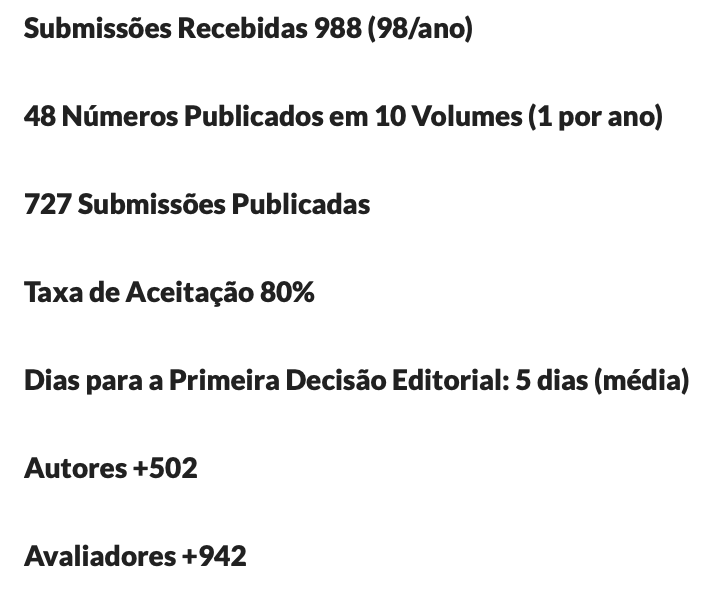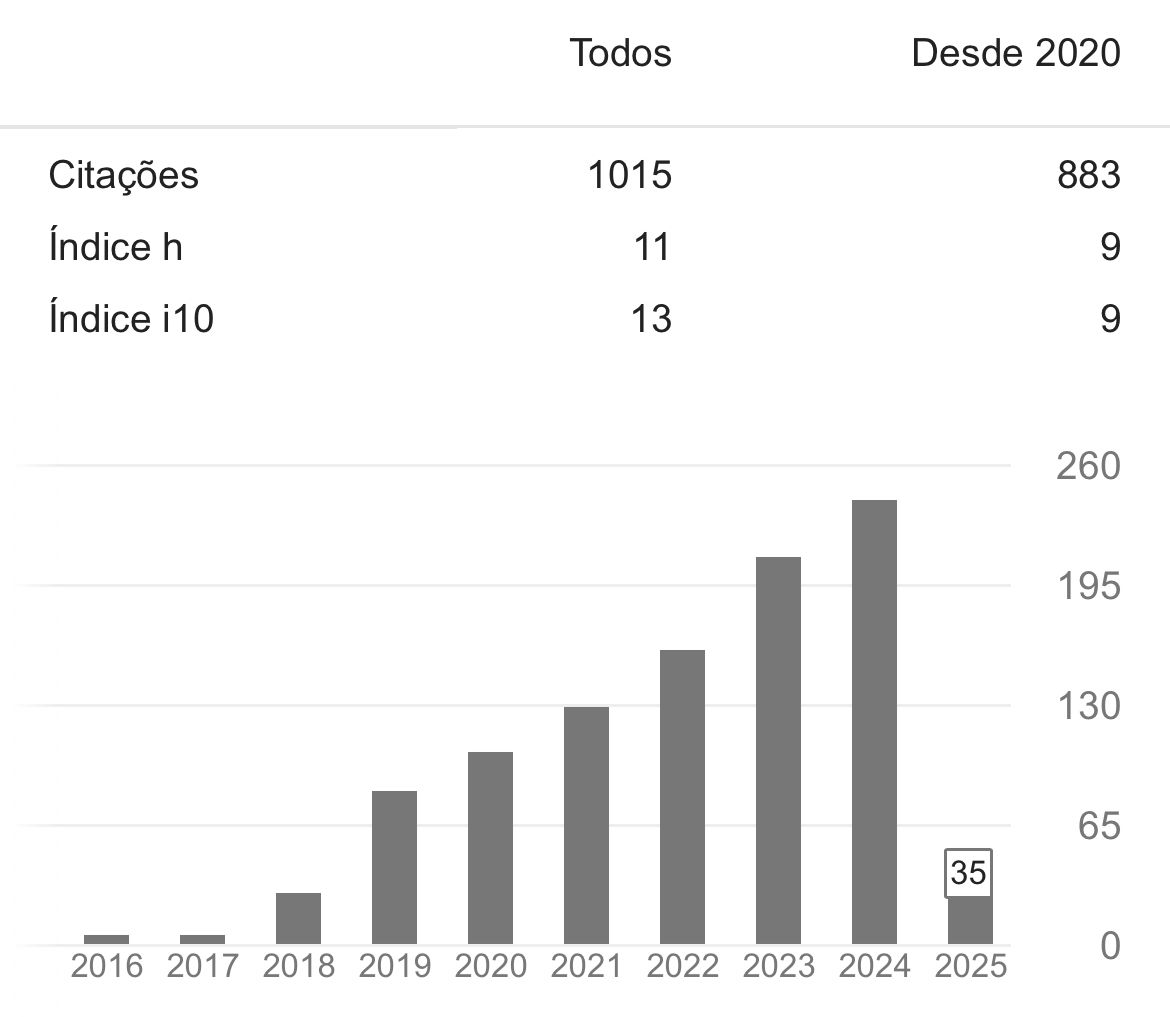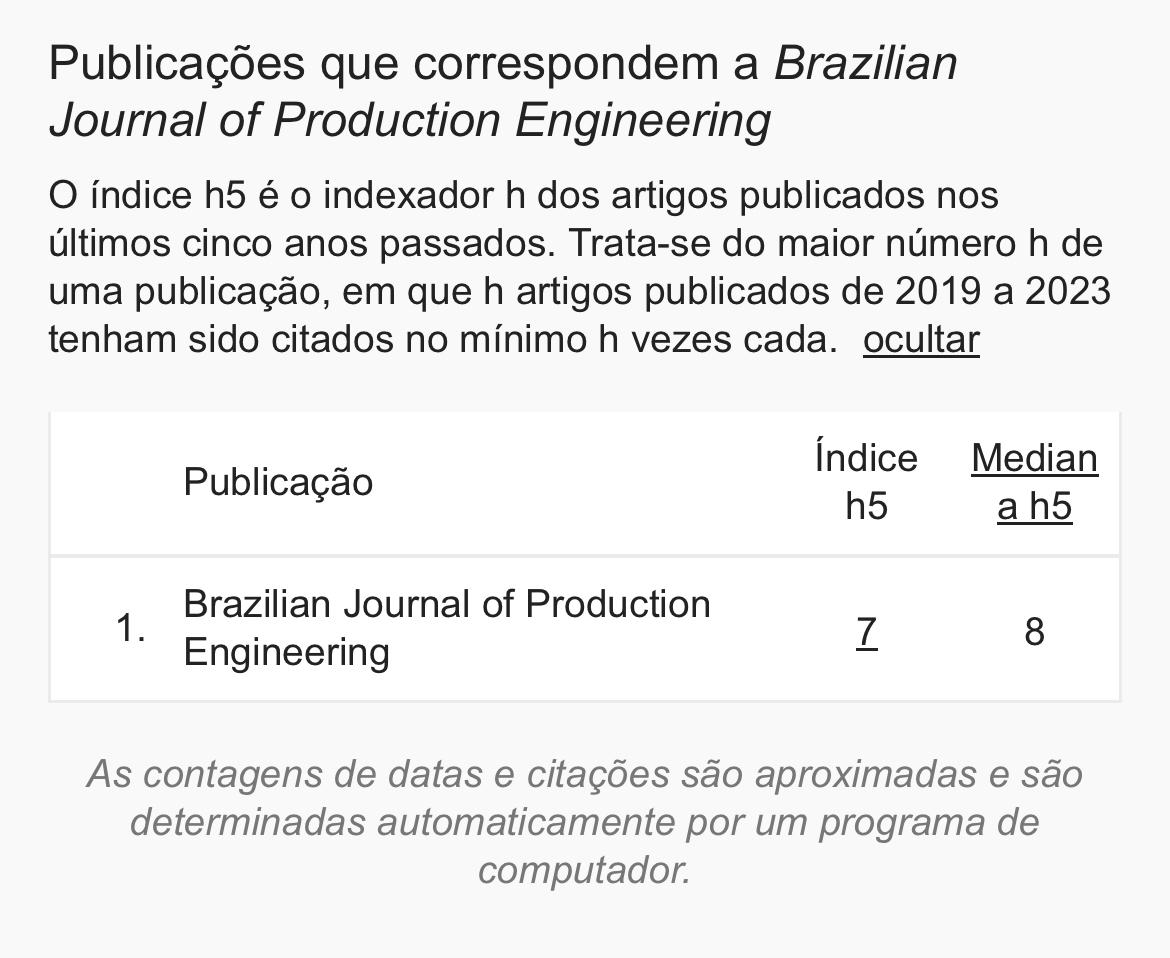Application of Roadmap DMAIC in the management of automotive line supply
DOI:
https://doi.org/10.47456/bjpe.v6i7.30399Keywords:
Kanban System, DMAIC, Automotive IndustryAbstract
In order for the production orders to be finalized, the balance must be transferred correctly between stock and line. In this context, pending production order problems due to balance discrepancies is a significant factor in increasing the lead time of the product. In this way, the general objective of this work was to improve the accuracy of the balance in the production line supply in an automotive company. For that, the methodology used was the DMAIC roadmap, developing the steps: define, measure, analyze, improve and control. It was defined that the area of the administration of materials that has the most impact on the pending orders is the method of supplying by sequencing, in this way, the sequencing cell that showed greater process variability was selected. In the measurement period, there were 258 orders pending, by the cell with the greatest impact, representing approximately R $ 17,000.00 in men hours invested in analyzes of divergences. By analyzing the causes, to reduce pending order situations, it was proposed to make changes in the process flow, implement an information management framework and create a method of sequencing ID cards. After controlling the improvement, it was concluded that the occurrences of pending orders reduced. However, it is still necessary to increase the application of the improvements in every sequenced supply method, trying to further reduce the occurrences.
Downloads
References
Carpinetti, L. C. R., Miguel, P. A. C., & Gerolamo, M. C. (2012). Gestão da Qualidade: conceitos e técnicas. 2. ed. São Paulo: Atlas.
Correia, H. L, Gianesi, N. G, & Caon, M. (2007). Planejamento, programação e controle da produção MRPII & ERP, 5. Ed. São Paulo: Atlas.
Chakrabortty, R. K., Biswas, T. K., & Ahmed, I. (2013). Reducing Process Variability by using DMAIC Model: A Case Study in Bangladesh. International Journal for Quality Research, p.127–140.
Diehl, A. A. (2004). Pesquisa em ciências sociais aplicadas: métodos e técnicas. São Paulo: Prentice Hall.
Farsi, M., Bailly, A., Bodin, D., Penalla, V., Pinault, P-L., Nghia, E. T. T., Sibson, J., & Erkoyuncu, J. A. (2020). An Optimisation Framework for Improving Supply Chain Performance: Case study of a bespoke service provider. Procedia Manufacturing, v49, p. 185-192.
Fujimoto, T. (1999) The Evolution of a Manufacturing System at Toyota. New York, Oxford University Press.
Clark, K. B., & Fujimoto, T. (1991). Product Development Performance: Strategy, Organization, and Management in the World Auto Industry. Boston, Haverd Business School Press.
Harea, C. V., Marian, L., Moica, S., & Al-akel, K. (2018). Case study concerning 5S method impact in an automotive company. 11th International Conference Interdisciplinarity in Engineering, INTER-ENG, Tirgu-Mures, Romania.
Hyde, W.F. (1981). Improving productivity by classification, coding and data base standardization: the key to maximizing CAD/CAM and Group Technology. New York: M. Dekker.
Ikumapayi, O. M., Akinlabi, E.T., Mwema, F. M., & Ogbonna, O.S. (2020). Six sigma versus lean manufacturing – An overview. Materials Today: Proceedings. 26, p. 3275-3281.
Kiran, D. R. (2019). Production Planning and Control: A Comprehensive Approach, Elsevier e Book Aid International. p. 369-379.
Krishnan, B. R., & Prasath, K. K. (2013). Six sigma concept and DMAIC implementation. International Journal of Business. 3, p. 111–114.
Lage Junior, M., & Godinho Filho, M. (2010). Variations of the kanban system: Literature review and classification. Int. J. Production Economics, 125, p. 13-21.
Mast, J., & Lokkerbol, J. (2012). An analysis of the Six Sigma DMAIC method from the perspective of problem solving. International Journal of Production Economics, 139, p. 604-614.
Moura, R. A. (1989). Kanban; a simplicidade do controle de produção. São Paulo: IMAM.
Muneer, T., Kolhe, M., & Doyle, A. (2017). Electric Vehicles: Prospects and Challenges, Elsevier, 2017.
Peruchi, R. S. (2014). MDMAIC: um roadmap Seis Sigma multivariado. Tese de Doutorado. Universidade Federal de Itajubá, Itajubá.
Pimenta, L. J. (2002). A crise nas redes concessionárias de automóvel no Brasil. 157f. Dissertação de Mestrado, Universidade Salvador, Salvador, BA, Brasil, 2002.
Pyzdek, T., & Keller, P. A. (2010). Six Sigma Handbook: A Complete Guide for Green Belts, Black Belts, and Managers at All Levels. McGraw-Hill Companies, 3ed.
Rahman, N. A. A., Sharif, S. M., & Esa, M. M. (2013). Lean Manufacturing Case Study with Kanban System Implementation. Procedia Economics and Finance, 7, p. 174 – 180.
Rotondaro, R. G. (2013). Seis Sigma: estratégia gerencial para a melhoria de processos, produtos e serviços. 1. ed. São Paulo: Atlas.
Schönberger, R. J. (1982). Japanese manufacturing techniques - nine hideen lessons in simplicity. New York, The Free Press/MacMillan.
Sindha, N., Suthar, K. (2017). Review on Implementation of Six Sigma DMAIC Methodology in Manufacturing Industries. International Journal of Science Technology & Engineering, 3, p. 168-171, 2017.
Slack, N., Chambers, S., & Johnston, R. (2009). Administração da produção. 3. ed. São Paulo: Atlas.
Sokovic, M., Pavletic, D., & Pipan, K. K. (2010). Quality Improvement Methodologies - PDCA Cycle, Radar Matrix, DMAIC and DFSS. Journal of Achivements in Materials and Manufacturing Engineering, 43(1), 476-483.
Tohidi, H., & Khedriliraviasl, K. (2012). Six Sigma Methodology and its Relationship with Lean Manufacturing System. Advances in Environmental Biology, p. 895-906.
Werkema, C. (2011). Lean Seis Sigma: Introdução às ferramentas do lean manufacturing. 2. ed. Rio de Janeiro: Elsevier.
Womack, J. P., Jones, D. T., & Roos, D. (1991). The Machine that Change the World. Macmillan, New York, 1991.
Downloads
Published
How to Cite
Issue
Section
License
Copyright (c) 2020 Brazilian Journal of Production Engineering - BJPE

This work is licensed under a Creative Commons Attribution-NonCommercial-ShareAlike 4.0 International License.

















































































